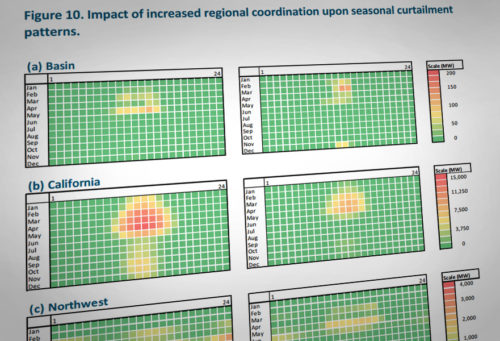
E3 recently completed an assessment of the flexibility of the generation fleet of the Western Interconnection under a range of renewable penetrations.
The study examines the operational consequences of continuing to add variable renewable resources (wind and solar) in excess of current policy targets, as well as strategies to mitigate the challenges that arise at higher penetrations. The results of the study will be shared in a webinar hosted by WECC on January 27.
This study was jointly undertaken by the Western Electricity Coordinating Council (WECC) and the Western Interstate Energy Board (WIEB) to investigate the need for power system flexibility to ensure reliable operations of the interconnected Western electricity system under higher penetrations of variable energy resources. WECC and WIEB have partnered with Energy & Environmental Economics, Inc. (E3) and the National Renewable Energy Laboratory (NREL) to investigate these questions using advanced, stochastic reliability modeling and production cost modeling techniques. The study identifies and examines operational challenges and potential enabling strategies for renewable integration under a wide range of operating conditions, scenarios, and sensitivities across the Western Interconnection, with the goal of providing guidance to operators, planners, regulators and policymakers about changing system conditions under higher renewable penetration.


